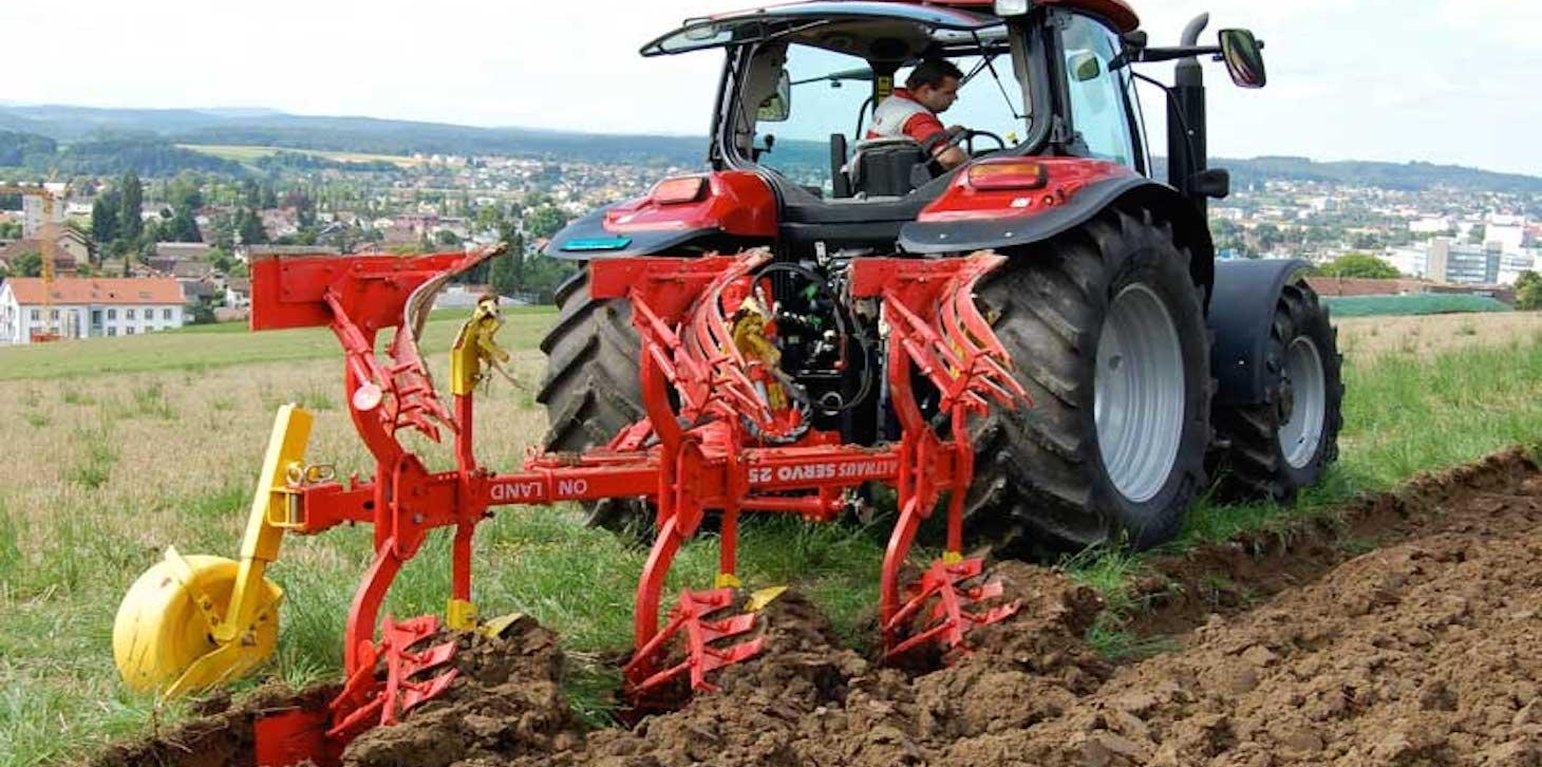



Schon früh war dem Bauern eine bodenschonende Landnutzung wichtig. Seit den 1980er-Jahren werden die Felder deshalb ohne Herbizideinsatz bestellt. 2005 wurde der Betrieb schliesslich auf einen Biobetrieb umgestellt. Der pfluglose Ackerbau ist dabei noch schwierig. Trotzdem versucht der Bauer den Boden möglichst schonend zu bestellen. Das bedeutet, dass er seit 2002 den Boden nur noch oberflächig mit Scheibenegge, Federzahnegge oder zur Stoppelbereitung nach der Getreideernte mit dem Flügelschargrubber bearbeitet. Die Bearbeitungstiefe liegt dabei bei ca. 8 cm. Trotzdem kann er nicht ganz auf den Pflug verzichten. Der Umbruch der Kunstwiese erfolgt mit dem Onland-Pflug und auch zur Bekämpfung der Drahtwürmer wird dieser eingesetzt.
Purpose of the Technology: Mit dem Einsatz des Onland-Pflugs soll der Boden schonender bearbeitet werden, als mit dem konventionellen Pflug. Zudem wird dieser Onland-Pflug nur noch teilweise eingesetzt. Oft werden Felder auch gegrubbert oder Mulchsaat betrieben. Dies ermöglicht eine nachhaltige Bodenbearbeitung.
Location: Kirchlindach, Bern, Switzerland
No. of Technology sites analysed:
Spread of the Technology:
In a permanently protected area?:
Date of implementation: less than 10 years ago (recently)
Type of introduction





| Specify input | Unit | Quantity | Costs per Unit (n.a.) | Total costs per input (n.a.) | % of costs borne by land users |
| Labour | |||||
| Maschine anschaffen: ausleihen, kaufen, Lohnarbeiter anstellen | ha | 1.0 | 18000.0 | 18000.0 | 33.0 |
| Total costs for establishment of the Technology | 18'000.0 | ||||
| Total costs for establishment of the Technology in USD | 18'000.0 | ||||